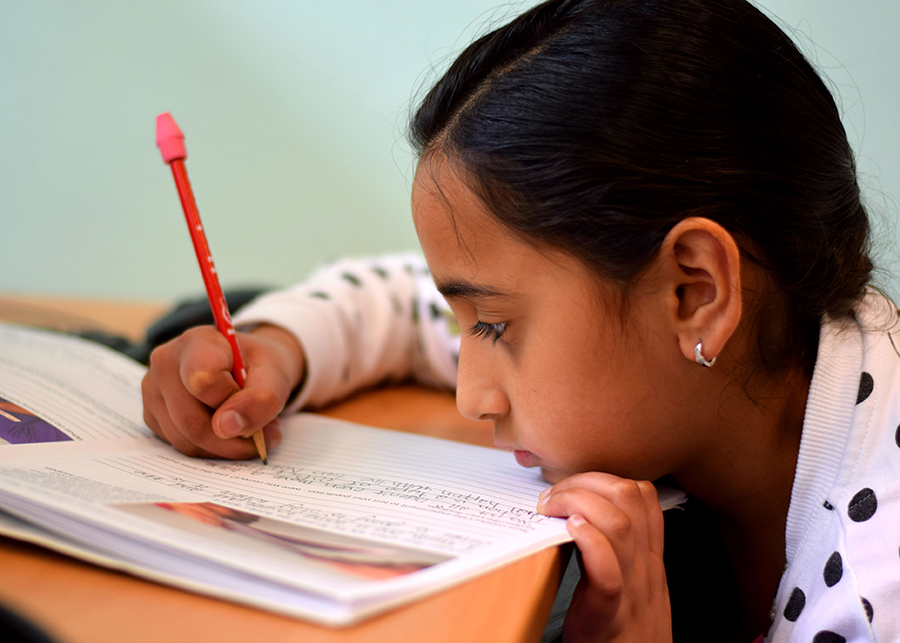By Jeff LeBlanc | Contributor
I’ve been immersed in the education field throughout my adult life, from teacher to autism clinic behavior therapist to working for a tutoring and enrichment company. That’s why when I was diagnosed with ADHD, I couldn’t help but put myself in the shoes of the children we serve. Here are four key strategies I learned straight from the experts that you can use for your child with hyperactivity or inattention.
Don’t sleep on the importance of a good night’s rest
According to the National Resource Center on ADHD, 25-50% of parents report that their child with ADHD has either difficulty falling asleep or staying asleep, and children with ADHD are 2-3 times more likely to have sleep problems than kids without. So what can a parent do to help their child rest easy? In an interview with Explore Learning, Dave Gibson, founder of The Sleep Site and qualified hypnotherapist, talks about how to encourage healthy sleep habits: “The older your child gets, the more difficult boundaries around technology seem to get… The general rule should be that everyone switch off all technology at least an hour before bed, as blue light and mental stimulation will keep your child awake.” Gibson also
recommends some ideal late night snacks: bananas are a source of magnesium and vitamin B6, which relax muscles and aid in the production of relaxing serotonin, and cherries contain melatonin, which the body produces to regulate sleep. Finally, Gibson emphasizes shifting the responsibility to the child: “The key here is to support and encourage children to work out for themselves what is affecting their sleep, both positively and negatively.”
Engage your school’s formal processes
Public schools and private schools both approach entrance into special education supports differently depending on what level of federal funding the school receives (see resources at the end of this article). But it’s important to know that every school’s counselors or administrators will be familiar with their school’s method for identifying special needs.
The best thing to do is to submit a request to the school’s principal or your child’s counselor addressing these 3 areas: 1) Request that your child be evaluated for additional academic supports. 2) Name your child’s diagnosis or any medical factors affecting your child’s learning. 3) Request a copy of the report generated from this evaluation to review before scheduling your Individualized Education Plan (IEP) with the school. The school is your partner in this process! They can work with you and your child’s teachers to build that IEP. Be sure to ask what accommodations are being provided for your child to make the curriculum fully accessible to him or her, and ask how you can keep your child accountable to these at home too. For a full list of accommodations and more about IEPs, visit the resource at the end of this article on the Texas Education Agency website.
It takes a village
It’s important to remember that you’re not alone: there are parents all around you who are going through the same challenges! At the end of this article is a list of online resources that offer free downloads and access to professional supports.
When you’re looking for academic support for your child, you want to find a program that supports your whole child in a highly motivating way. Kim Gossett, Explore Horizons’ Special Education Trainer, says, “When you have a special educational need, the way you learn may not be supported by the normal classroom. We have the ability in each learning center to design the curriculum that’s going to best suit the child.” Gossett has a uniquely inclusive view of special education: “Every child has a special educational need. We believe learning behaviors can be developed, and those behaviors are the foundation of any academic growth.” Always consider a tutoring provider’s ability to personalize their approach directly to your child, and their ability to assist in systematically building positive learning behaviors.
Accommodations don’t stop at home
Everything that makes children feel comfortable and relaxed is found at home, right? So how on earth can our students with ADHD get homework done at home? Carolyn Baker, Assistant Director of the Explore Horizons learning center in Fort Worth, says that there are plenty of supports parents can use at home to help at homework time. A swivel chair or wobbly cushion provide children with hyperactivity the chance to get sensory input while still being seated and focused. Baker says it’s important to structure homework with frequent breaks, perhaps getting access to those breaks only when small, defined chunks of work are accomplished.
Fidget toys are also a tough one: where parents may instinctively think toys should be out of the environment because they are distracting, some toys can be the object of fidgeting behaviors and give that hyperactivity a focused outlet. In Psychology Today, Dr. Mark Goulston supports this idea when he explains, “True ADHD is about having your concentration interrupted from inside your brain because the resting ‘idle’ of your brain cells is too slow… natural adrenaline raises the resting ‘RPM’ of your brain enough to engage your mind (think of needing to get your manual transmission car’s engine beyond 800 RPM or it will stall).” Fidget toys bring that resting rate of brain activity up, as long as they’re not taking too much attention away from the task at hand!
Editor’s Note: Jeff LeBlanc is part of the team at Explore Horizons, a unique concept in tutoring and enrichment where children can expand their academic progress in a no-pressure environment. For more information, go to: www.explore-horizons.com.


